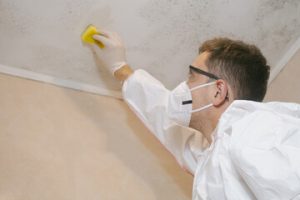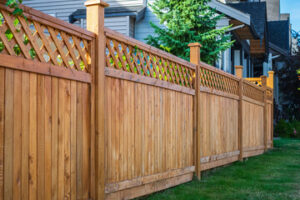Foundation problems can be expensive to repair, especially if left unchecked. Preventative measures can help reduce the cost of repairs and extend the life of your home.

Cracks, sagging floors and doors that stick are all signs of excessive or uneven settlement. Bringing your home back to its original elevation stops more damage, closes the cracks and restores functionality. Contact Foundation Repair Greensboro NC for professional help.
Foundation piers are installed underground to support the structure of your home. They are tall, cylindrical supports that look like the columns on a plantation-style home’s front porch. They can be made of steel or concrete. A contractor digs holes for them in the ground and then pours concrete in order to firmly anchor the piers in place, or they can be hydraulically pressed into the soil using a mechanical lift system. After they are in place, a contractor will use their equipment to raise your sunken foundation and make sure it is back at its original elevation.
When a foundation sinks, it causes everything in your home to shift and become off-kilter. This can lead to cracks in walls, doors that won’t open and close, and uneven or sloping floors. Foundation repair returns your home to its original elevation, which will close up the cracks, re-align the doors and windows, and help your home work the way it was intended to.
Many foundation repair experts will recommend slab piers for modern concrete slab-type homes, especially in situations where the issue has to do with soil with low weight-bearing capacity or drainage problems that have washed away portions of the ground underneath your foundation. Slab piers are a permanent solution that will not need to be replaced, unlike other “fixes” on the market. They’re also less invasive than other options and aren’t as expensive as many other foundation repair methods. In addition, they’re able to handle heavier loads than other solutions, so you won’t have to worry about your foundation becoming unstable in the future. They’re also ideal for supporting retaining walls and decks.
Slab Jacking
Slab jacking is a concrete repair process that raises sunken or uneven concrete slabs like driveways, sidewalks, patios, and foundation floors. It is much less invasive than replacing the concrete and is often more cost-effective. This technique is ideal for fixing minor to moderate damage to concrete, as it stabilizes the surface and fills gaps to prevent further damage. It is best used in stable soil conditions with minimal moisture and organic material that could compromise the concrete.
During the slab jacking process, we use hydraulic pressure to drill small holes into the slab. Then, we pump a thick mixture of cement and other ingredients underneath the slab. This mixture lifts the slab and fills any voids to restore it to its original position. The drilling and slurry injection are performed quickly with minimal impact to the surrounding area. Once the slab is raised, we patch and clean the site, leaving little evidence of a repair apart from your newly level slab!
While the slab jacking process is similar to mudjacking, there are some key differences. Mudjacking involves using a mud-like material to lift the concrete slab, but it is less precise than poly slab jacking. Additionally, mudjacking cannot lift foundations or other intact concrete structures. It is also not recommended for areas where the sinking concrete is caused by extensive tree roots.
Unlike mudjacking, poly slab jacking uses a high-density polyurethane foam that is lightweight yet incredibly strong. It is also resistant to water, chemicals, and erosion. The polyurethane foam also has the added benefit of being eco-friendly and a safer alternative to traditional grout. The quick installation time means that you can return to your home or business almost immediately after the process is complete, with minimal disruption.
Masonry Patches
Masonry surfaces are susceptible to two primary problems: physical damage and surface degradation, commonly called efflorescence. In order to address these issues, the surface must be cleaned and repaired properly. This is done by removing the deteriorating material and cleaning the surface to allow for a proper bond between the substrate and the patch. In some cases, a waterproofing membrane can be installed to protect the masonry structure from moisture intrusion and to improve the appearance of the surface.
When repairing cracks in brick walls, chimneys, sills or steps, first use a cold chisel and hammer to undercut both sides of the crack and then clean out the damaged mortar. Next, place a concrete adhesive into the crack to help bond the patching material to the existing masonry. This will also prevent the patching material from cracking and failing during the freeze-thaw cycle.
Typically, the best material for brick repair is a pre-mixed masonry patching compound that matches the surrounding surface and is ready to use. These products can be applied in a variety of thicknesses and can be used in conjunction with an expansion joint. They are available in a range of finishes and can be color matched as well.
Using a stone patching material such as akemi may be another option for some masonry restoration contractors. These products can be used in a wide range of temperatures and provide a strong, durable and carvable repair. These products can be color matched for a more professional appearance as well. Latex modifiers are sometimes added to these materials to improve their workability, durability and resistance to the elements.
Concrete Patches
Concrete patching is used to fill cracks and gaps in damaged concrete, but it is not intended as a long-term structural solution. The type of concrete patch used should be carefully evaluated to ensure that it is appropriate for the specific project, and material compatibility with existing concrete should be a primary consideration.
Before applying concrete patch, the surface should be thoroughly cleaned to remove any debris that may prevent adhesion. A pressure washer with a low PSI rating can be effective for this purpose, but it is important to avoid using a sprayer that produces water droplets.
After the surface is clean, it should be lightly misted with water and covered with damp burlap or plastic sheeting to help it retain moisture during curing. It is also a good idea to cover the area with a tarp during wet weather to protect it from moisture that may cause the patch to lift.
Before concrete patch is applied, a bonding agent should be used to promote adhesion between the new concrete and existing concrete. Concrete adhesives are available in a variety of forms, from liquid to powder. These products are usually easy to use and can be mixed with water. A general-purpose concrete adhesive is SureBond, which comes as a milky fluid that can be applied to the work area with a brush.
After the bonding agent has been applied, concrete patch can be mixed and troweled into place. Once the concrete has set, it should be smoothed with a metal or wooden float to provide a more finished appearance. It is essential that the concrete patch is protected from traffic and moisture during the curing process.
Steel Piers
Steel piers (also called ECP foundation piers) are high-strength, cylindrical steel components that are driven into the ground using hydraulic equipment. While less common than concrete piers, this support option can be just as effective for stabilizing a home or business. They can also be used for a wider range of foundation sizes and types than concrete piers, making them an excellent choice for commercial properties.
Like other pier repair methods, the installation of steel piers depends on many factors, including soil conditions and the building’s weight. A qualified engineer or foundation specialist should assess a foundation to determine the proper method of repair.
If you’re experiencing signs of a foundation problem, your expert may recommend that you use piers to support the structure and prevent further movement. Cracks in walls or floors, uneven or sloping floor levels, and difficulty opening doors and windows are all common signs of foundation settlement that can be corrected with the addition of steel piers.
Unlike concrete piers, steel piers are resistant to soil movement and are less affected by moisture swelling. They can also be installed to an exceptionally deep depth, which makes them a great solution for homes or businesses that are located on challenging soils.
Like helical piers, hybrid pressed concrete piers (also known as helical-steel hybrid piers) are a good option for repairs that require both structural integrity and affordability. This is because they combine the strengths of both steel and concrete for a stronger, more durable support system. Like helical piers, pressed concrete piers are driven into the ground by hydraulic equipment until they reach load-bearing soil. They are then connected to the foundation with steel brackets and locked in place with steel cable. Once the piers are in place, they’re load-tested to ensure that they can withstand the full weight of your structure.



